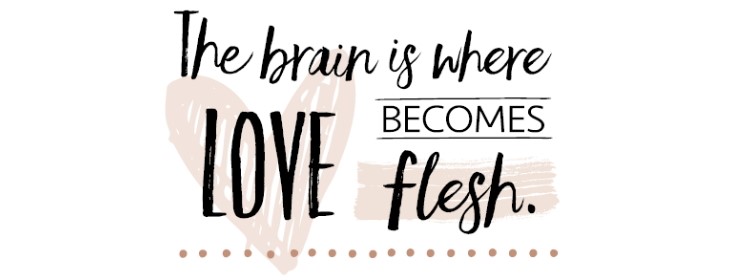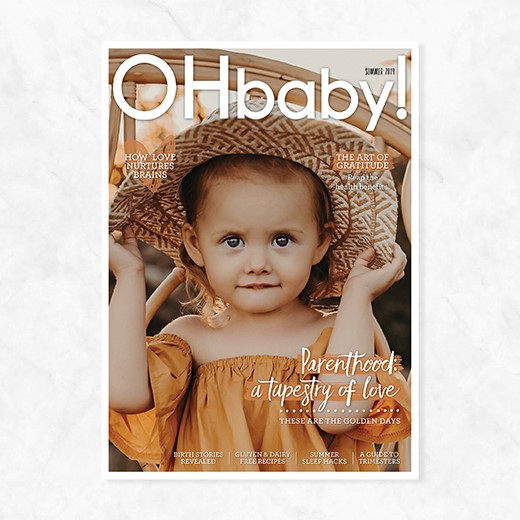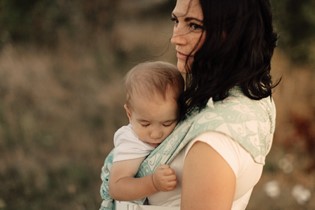How the power of love grows our brains

Miriam McCaleb outlines how the simplest connections are actually building blocks for great brain development, especially in your child’s earliest years.
There are only two ways to live your life: as though nothing is a miracle, or as though everything is a miracle.”
This quote from Albert Einstein paves the way for a scientific celebration of the miracle of babyhood. Even before we talk about the miraculous nature of rapid and personalised brain growth, let’s also recognise the miracles of conception and pregnancy. Your ancestral line somehow made it through millions of years of evolution. Even with prehistoric ice ages, dramatic revolutions and rush hour traffic, you made it to child-bearing age. The intermingling of DNA as bloodlines merge and family stories combine. The seemingly impossible swelling of a body as one human grows another (all while doing household tasks and napping – incredible!). The cells dividing, a beautiful sequence of biological processes as those cells become zygote, embryo, foetus ... BABY!
The whole story to this point is miraculous, but what happens next is perhaps even more so. You see, our babies are born with incomplete brains. For most full-term babies, the rest of their organs are just quietly doing their thing by the time Baby is born: little hearts are already fully organised and pumping blood, little lungs are exchanging oxygen for carbon dioxide. However, the human brain is different and still has major development to undergo after we’re born. At birth our brains weigh about one third of their eventual adult weight; by the time we’re three years old they weigh about 80 percent; by age five, they weigh about 90 percent.

THE FOURTH TRIMESTER
The early weeks of an infant’s life are sometimes called the fourth trimester, because during babyhood our little ones are so very vulnerable. Unlike the offspring of other animals, human infants are born without any ability to outrun predators or even find their milk source without help.
Think of other mammals, such as foals, who can almost immediately stand on albeit wobbly legs, or lambs who can independently find their way to their mother’s milk. Think of chimps who cling on to their mum’s fur as she swings through trees to find food, or dolphin calves who can instantly swim. Then think of our adorable little human baby, completely dependent upon the devotion of the adults surrounding him.
When we compare across species like that it might seem like our babies are at a disadvantage, and in the very short term they might be, but if we think longer term about the immature brains of human infants, it becomes apparent that this early vulnerability is the price we pay for an incredible evolutionary advantage.
DATA GATHERING
These early days, weeks and months of life for a little baby are all about data gathering. It’s as though a newborn baby is given instructions along the lines of, “Go and figure out what you need to know about this place and time in order to survive and thrive. Go and have as many experiences as you can.” So whether a baby is born in the Arctic circle, the jungles of Papua New Guinea or a farm in the Waikato, they will begin to accumulate experiences that equip them for a lifetime. The customs of a family, the sounds of a language, the dangers of specific places – all of these experiences form new pathways (called synapses) between brain cells and repeated experiences strengthen those pathways.
THE PRUNING PROCESS
When a child gets to about three years old, their brain undergoes a pruning process that can be compared to pruning a bush. Just like a gardener will keep the strongest limbs and trim away the weaker growth in order to further strengthen the robust bits, our brains prioritise the strongest synapses – that is, the experiences a baby/toddler has had most often. The weaker synapses, those occasional experiences, are pruned away.
In this way, humans have been able to thrive all over the planet in really diverse geographical locations. Not all species can do that. Babies born in the mountains of Tibet learn a whole different sense of ‘normal’ (not to mention a different skill set and language!) to babies born near the sea in Tonga, or a baby born amidst the bustle of Tokyo.
EARLY EXPERIENCES MATTER
This also demonstrates how much our first experiences matter. Our first few relationships are vital because they will go a long way toward teaching us what all relationships are all about. A baby who is used to having their needs met in an attuned and timely manner most of the time is likely to be a baby whose brain wires in a way that’s ready to participate in a lifetime of warm relationships.
A crucial point to remember is that our brains wire up strong synapses without judgement or knowledge of what will serve us in the future. If we are raised in a home where aggression is normal and violence is typical, or in a home where laughter is rare and adults are unavailable, our brains will accept that this is the data we have gathered, and this is what we should expect for the duration of our lives. These experiences can carve a groove into our neurological equipment, setting up patterns, informing personalities and calibrating stress response systems.

NEURO PLASTICITY
Change is always possible, but it’s oh-so much easier to get the foundations right the first time – while the cement is wet, as it were. We can carve new grooves and set new trajectories later in our lives, but we may have to be prepared to jackhammer out an old concrete foundation to do so.
How wonderful if the wet cement of early brain plasticity could be set in helpful ways the first time. This is what happens if we are lucky enough to be raised in a home where at least one adult is consistently available for shared gazes, warm smiles and gentle touches. Maybe not always – we can all get grumpy and impatient – but if we can aim for calm and attentive care most of the time, we will prune away the less frequent experiences. The grooves we carve will set a person up for a lifetime of loving reciprocity in their relationships.
Or, in the words of Dr Lou Cozolino, a writer, professor and psychologist, “The brain is where love becomes flesh”.
MORE THAN ROUTINE
So what does this mean for the busy parent of a needy newborn? How does this look in practice for the tired mum of an active infant, or the dad of a toddler who has just learned to run? It’s about holding your head up high with great pride, and recognising that there is nothing more important than the work you are doing when you care for a young child. Your loving care creates the synapses which will likely inform the habits and beliefs of your child throughout their life. In this way we can celebrate caregiving routines as being more than just routine – they actually go a long way to creating a person’s happily ever after.
The repeated experiences of early, everyday care are even more important than filling a little belly or cleaning a wet bottom, moment by moment. When so much of early parenthood involves recurring care moments, it’s important to find the connection and intimacy in feeding, changing, dressing and settling your baby. These daily chores might not be what others see as Instagram-worthy, but they are the real stuff of building brains and strengthening relationships.

LOVE ON REPEAT
Knowing that repeated experiences are what build brains, we do ourselves and our babes a great favour if we can ‘lean in’ to the built-in framework of repetitious care routines. If we can learn to see them as an opportunity to connect with our kids, to sing and chat and smile, we automatically take advantage of repeated experiences for relationship enhancing brain growth.
This means working to create unplugged time as often as possible – it’s not always easy, but we must work to give our attention to the little people with the rapidly growing brains and resist the devices that are designed to hog our attention without regard. When we parent with our smartphones in hand, research tells us that the social-emotional development of our infants is likely to suffer.
One of the ways to make sense of this is to think about how we evolved our amazing brains. ‘Homo sapiens’ means ‘the wise ones’, and our crew earned this name because of the size and power of our prefrontal cortexes. This region of our brains enables us to plan for the future, empathise with others, curb our behaviour and think deep thoughts.
Lessons from the intersection of evolutionary, anthropological, neurobiological and developmental sciences point to a series of caregiving behaviours called ‘the evolved developmental niche’. These are the practical ways an adult cares for a baby which point to the optimal development of that little person. The niche includes such things as lots of touch (for example, babywearing), breastfeeding on demand, responsiveness to baby’s needs, free play with multiple and different-aged playmates and positive social support for mum and baby.
These behaviours helped our ancestors to survive and led us to this very day –equipped with a juicy brain capable of reading the squiggles on this page and making meaning from them. These behaviours aren’t new or radical, and they may not be trending right now, but they do come from the ultimate longitudinal study: human evolution.
These behaviours allow us to demonstrate our love for our precious babies, and in so doing we create
a climate that’s just perfect for growing great brains. Ahakoa he iti he pounamu. (Translation: although he/she is small, he/she is a treasure).
| Miriam McCaleb is a writer, researcher and teacher. She’s the mum of two great girls, a founding member of the Brainwave Trust in the South Island and an eternal advocate for babies. Come visit her at baby.geek.nz. |

AS FEATURED IN ISSUE 48 OF OHbaby! MAGAZINE. CHECK OUT OTHER ARTICLES IN THIS ISSUE BELOW

















